Conformations are different spatial arrangements of atoms or groups attached to carbon atoms bonded by single bond which arise due to rotation about the single bond. These arrangements are also called conformational isomers or conformers. For example,
Conformations of ethane:
Let us consider ethane, CH3-CH3, as an example. The two tetrahedral methyl groups can rotate about the carbon-carbon double bond axis yielding several arrangements. The two extreme arrangements of ethane represented by ball-and stick models are shown bellow.
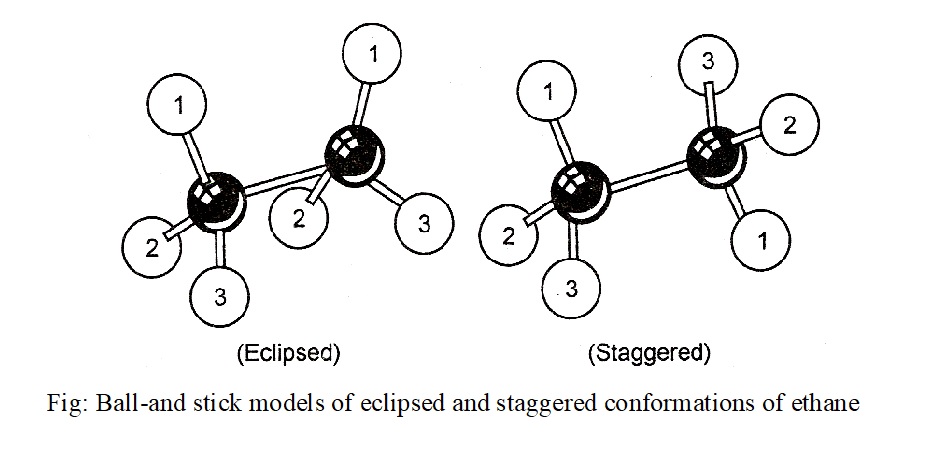 When viewed from one end of the model along C-C axis, the models shown above represent the following conformational forms.
When viewed from one end of the model along C-C axis, the models shown above represent the following conformational forms.

- The eclipsed form in which the rear methyl group is completely eclipsed and only the one nearer the eyes is visible.
- The staggered form in which the rear methyl group has been rotated upside down (shown above) and all the six hydrogen atoms of the two methyl groups are staggered symmetrically.
- Evidently there could be several other arrangement or forms possible in between the eclipsed and staggered form. Such an arrangement laying anywhere in between the two extreme form is called a skew form.
The Newman projection formulas for the conformations of ethane could be depicted as in fig bellow:
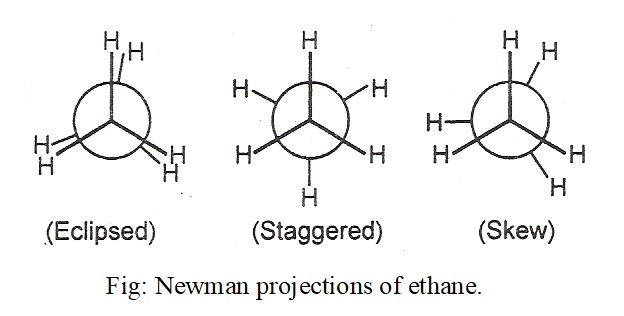
The different conformations of ethane are not equal stability. The staggered form in which the hydrogen atoms are perfectly staggered is the most stable conformation. This can be explain in terms of repulsive interactions between bonding pairs of electron. In ethane the interaction of bonding pairs of electrons (C: H) resulting in tetrahedral structure because it allows maximum separation of the four carbon – hydrogen bonds. The staggered conformation of ethane permits maximum possible separation of the electron pairs of the six carbon – hydrogen bonds. Thus staggered conformation of ethane is most stable and has lowest potential energy.
In the eclipsed conformation of ethane, the hydrogen atoms attached to each carbon are in direct opposition to each other. This permits minimum separation of the electrons of the six carbon-hydrogen bonds.

The eclipsed conformation is, therefore, of highest energy and has the lowest stability. Evidently, all the skew form of ethane will have stabilities in between that of staggered and eclipsed conformation. Hence, the relative stabilities of the various conformations of ethane are:
Staggered > skew > eclipsed
Conformation of Propane:
The next higher member in alkane series, propane has also two extreme conformations: staggered and eclipsed conformation. The Newmen projections are shown bellow. However, the energy barrier in propane is 14 kJ mol-1, which is slightly higher than that in ethane. In the eclipsed conformation of propane, there are two ethane type H-H interactions and an additional interaction between C-H bond and C-C bond (of methyl group). The variation of energy versus rotation about C-C bond is shown below.
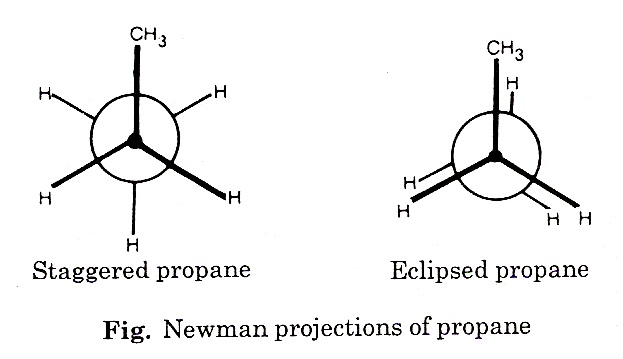
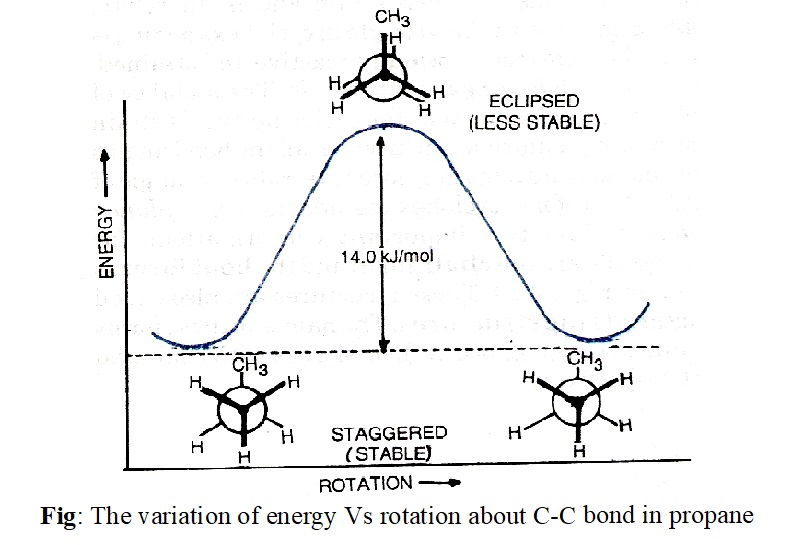
Conformation of butane:
In higher alkanes the conformation situation becomes more complex. In butane the rotation about the single bond between two inner carbon atoms (C2 and C3) is considered. In this case, all the staggered and eclipsed conformations will not have same stability and energy because of different types of interactions between C-C (of methyl group) and C-H bond. The lowest energy conformation will be one, in which the two methyl groups are far apart that is 180º away from each other. This conformation will be maximum staggered and is called anti conformation (marked-I). Other conformation may be obtained by rotating one of the C2 or C3 carbon atoms through an angle of 60ºas shown bellow:
 It is clear from the above Newman projections the gauche or skew conformations (III and IV) are also staggered. However, in this conformation, the methyl groups are so close that they repel each other. This repulsion causes gauche conformation to have about 3.8 kJ/mol more energy than anti-conformation. The conformations II and VI are eclipsed conformations. These are unstable because of repulsions. These are 16 kJ/mol less than anti conformation. Conformation IV is also eclipsed and it is least stable having energy 19 kJ mol-1more than anti conformation. This is because of repulsion between methyl-methyl groups which are close together. It is called fully eclipsed conformation.
It is clear from the above Newman projections the gauche or skew conformations (III and IV) are also staggered. However, in this conformation, the methyl groups are so close that they repel each other. This repulsion causes gauche conformation to have about 3.8 kJ/mol more energy than anti-conformation. The conformations II and VI are eclipsed conformations. These are unstable because of repulsions. These are 16 kJ/mol less than anti conformation. Conformation IV is also eclipsed and it is least stable having energy 19 kJ mol-1more than anti conformation. This is because of repulsion between methyl-methyl groups which are close together. It is called fully eclipsed conformation.
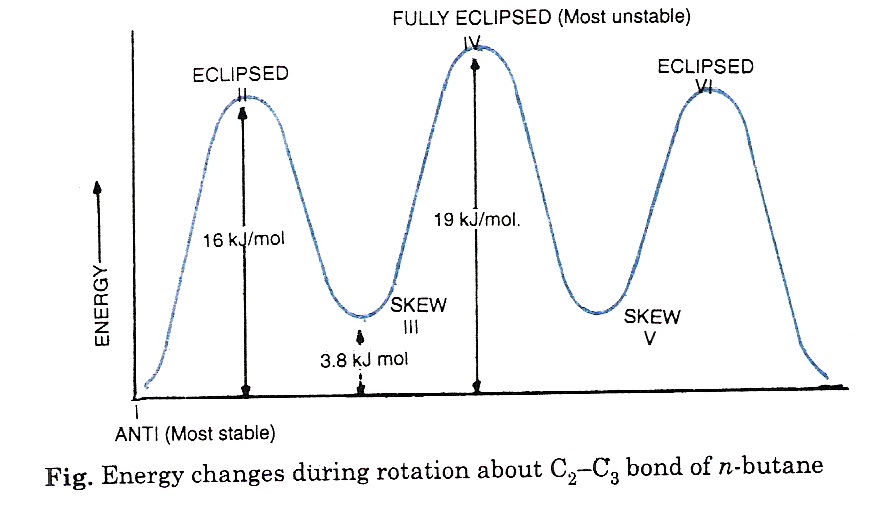
The order of stability of these conformations is
Anti>skew or gauche> eclipsed> fully eclipsed